Ailsa Craig rises up out of the Firth of Clyde, rounded and rugged, a gigantic lump of rock hard granite. I had the pleasure of sailing past this small island, 1 .2 km in diameter and home to over 35,000 pairs of northern gannets (Morus bassanus) last month, on a short, three-day cruise out of Liverpool.
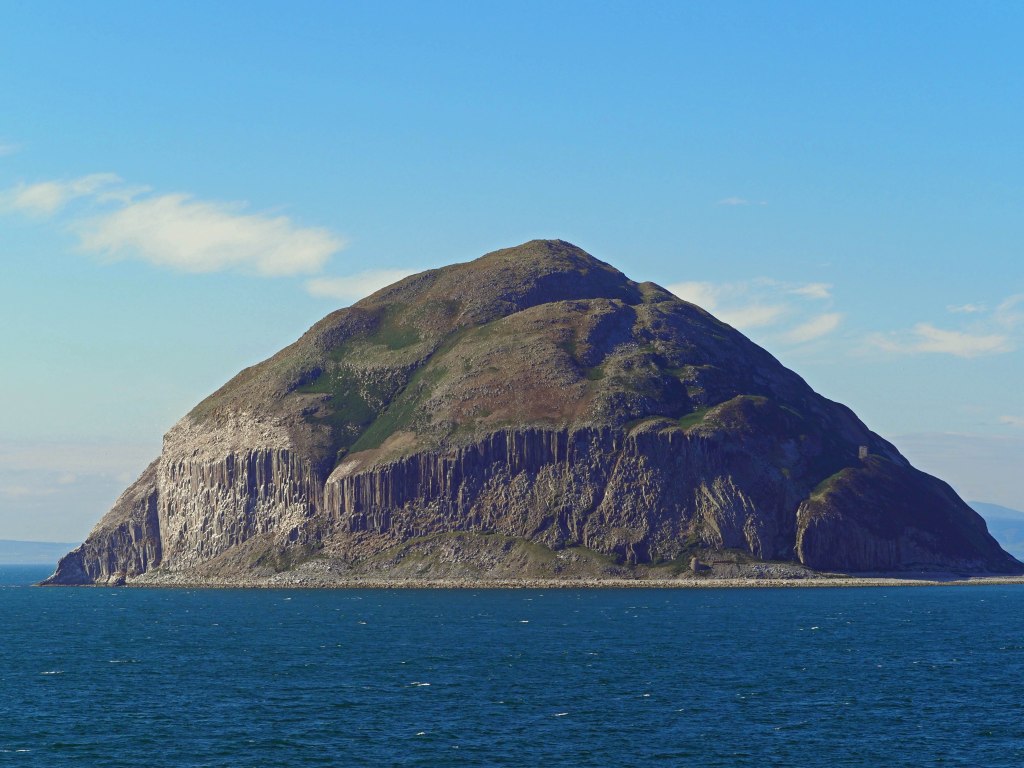
Ailsa Craig rises abruptly to a height of 340 m, 16 kilometres west of the Scottish mainland. It is the remains of an igneous intrusion which forced its way upwards between 50 to 61 million years ( Harrison, et al., 1987). The hot magma cooled slowly to form the coarse-grained microgranite called riebeckite (also called ailsite). This hard granite from Ailsa Craig was used for the manufacture of curling stones and the hard beach pebbles from this island are found all around the shores of the Irish Sea.
The riebeckite granite of Ailsa Craig forms a Tertiary granite boss rising out of the Clyde estuary..
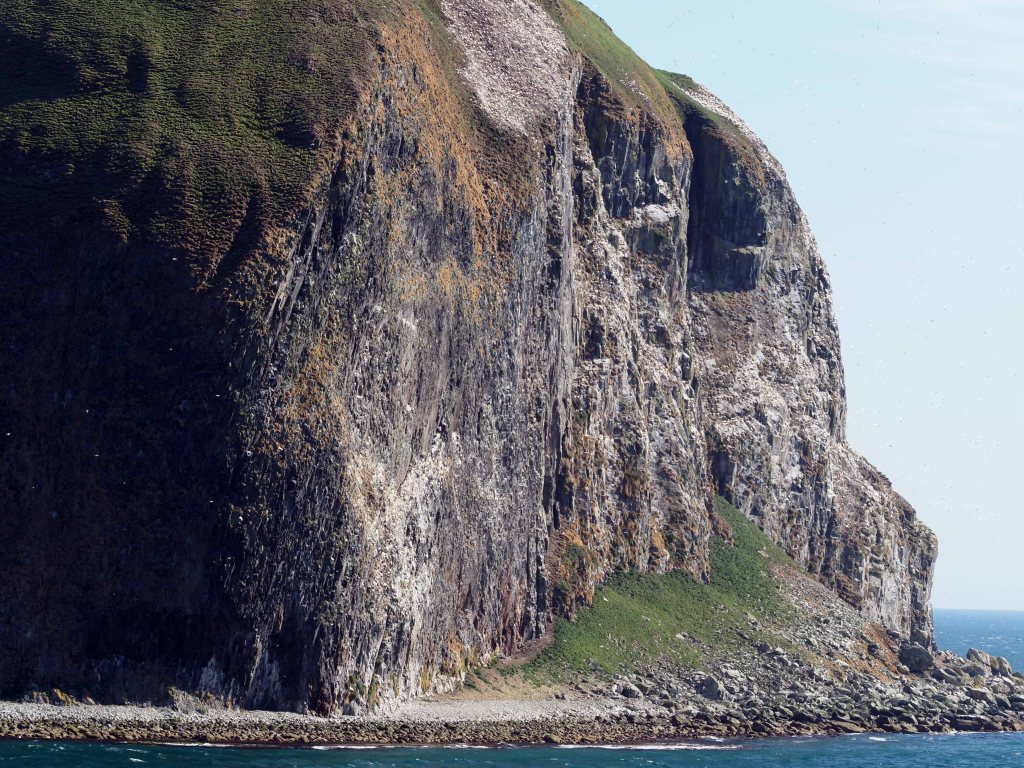
As you get closer to Ailsa Craig, it becomes apparent that there are vast numbers of sea birds, especially gannets, nesting on the island. Aerial surveys carried out in 2013–14, suggest that there are about 35,800 breeding pairs on Ailsa Craig (BirdLife data sheet).
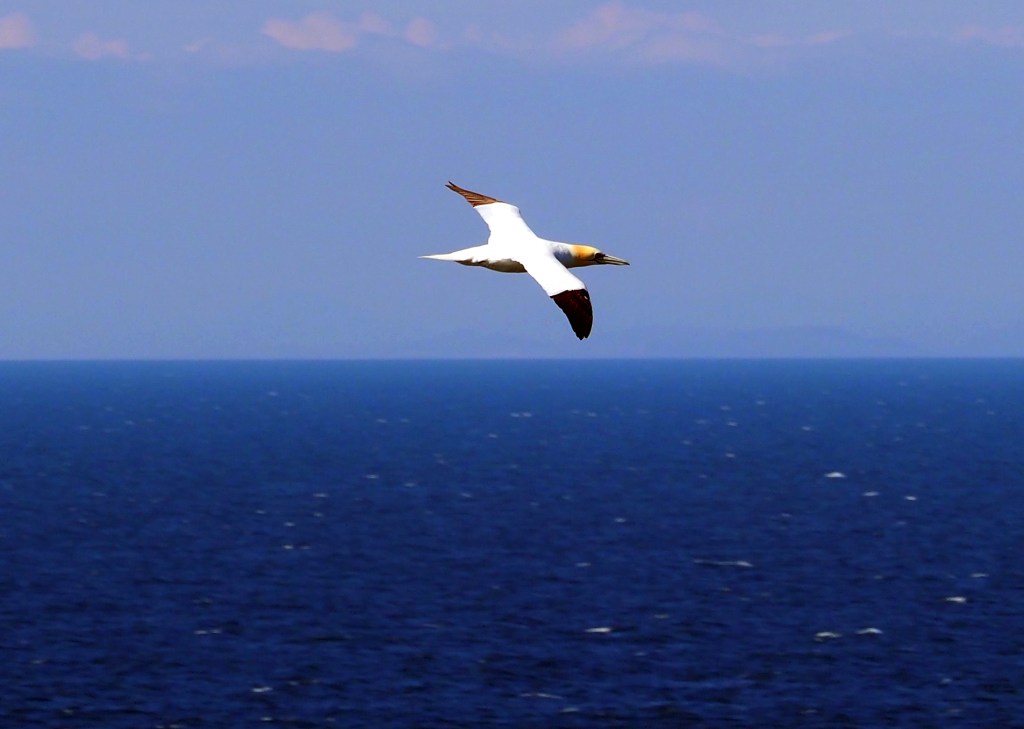
According to my calculations, Ailsa Craig is home to about 15% of the northern gannets in Scotland, which number around 243,505 apparently occupied sites. I.e. sites occupied by one or two Gannets irrespective of whether nest material was present (Murray et al., 2015).
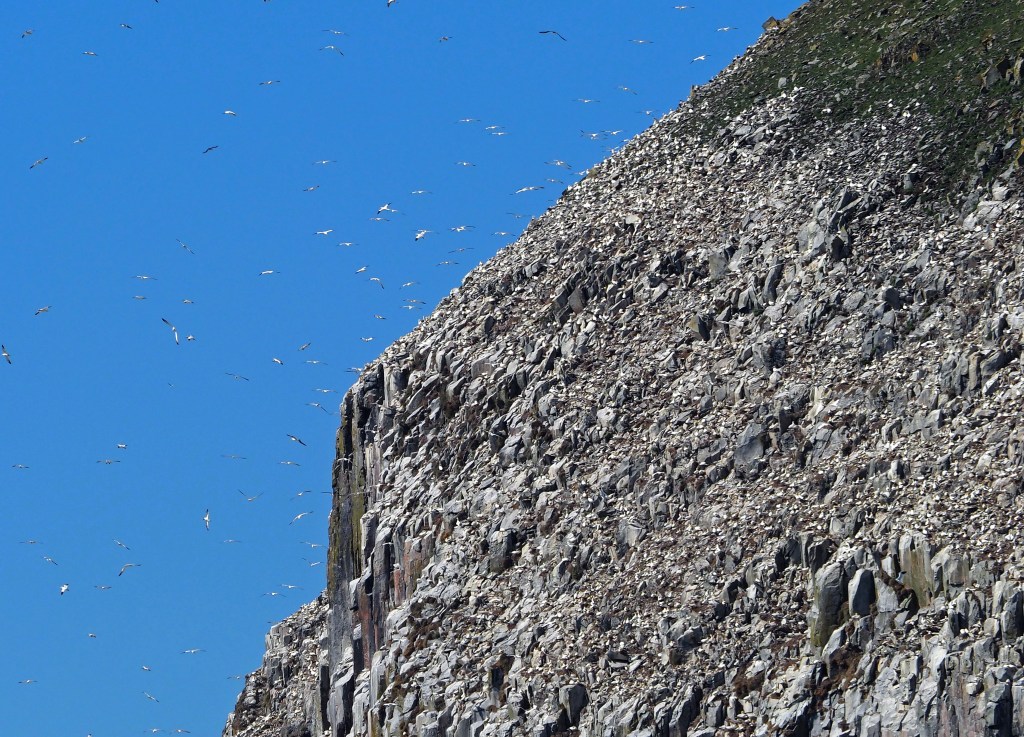
Since Scotland is home to about half of the world’s population of northern gannets, Ailsa Craig is a very important nesting site indeed.
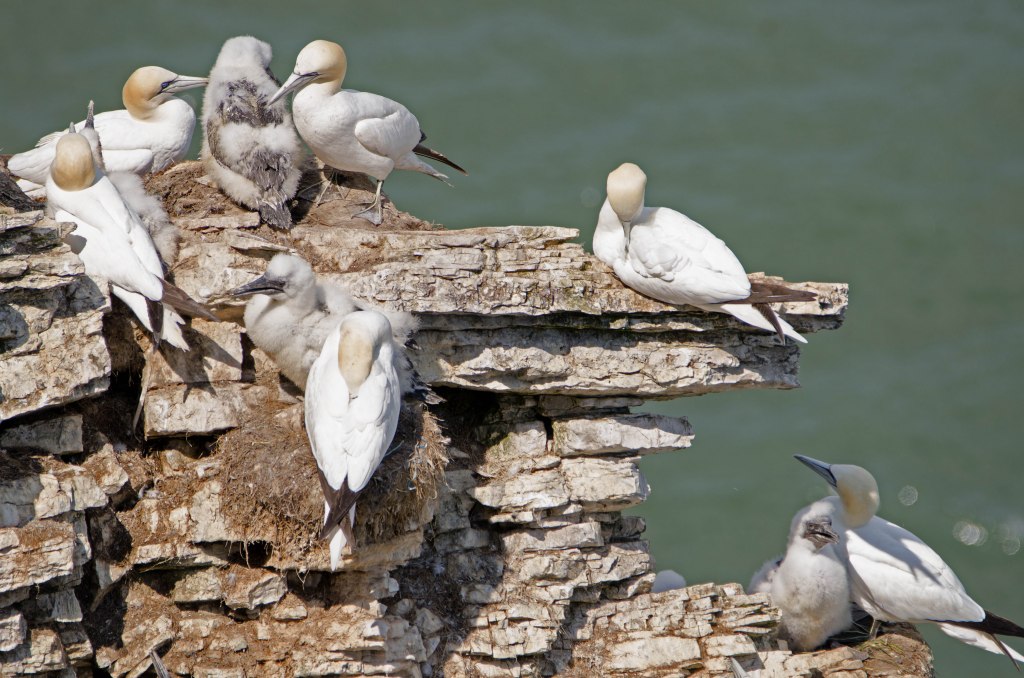
It is possible to visit the island of Ailsa Craig and climb to the top, but on this occasion I just sailed past on the Borealis, a Fred Olsen ship. We approached from the north side (below).
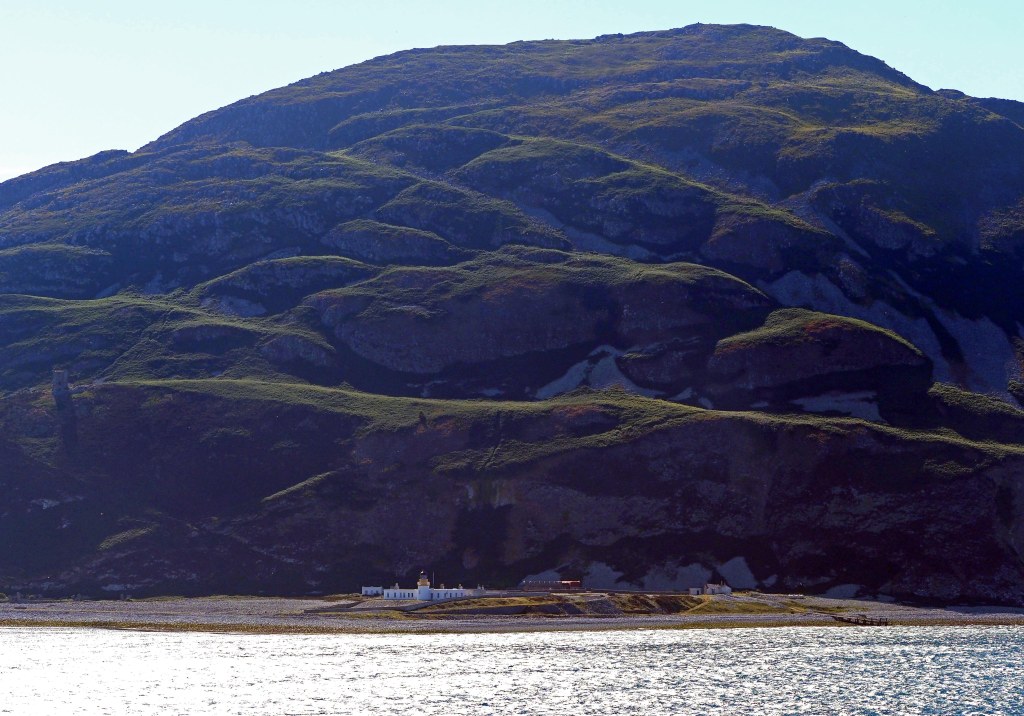
Soon, the magnificent granite cliffs came into view (below).
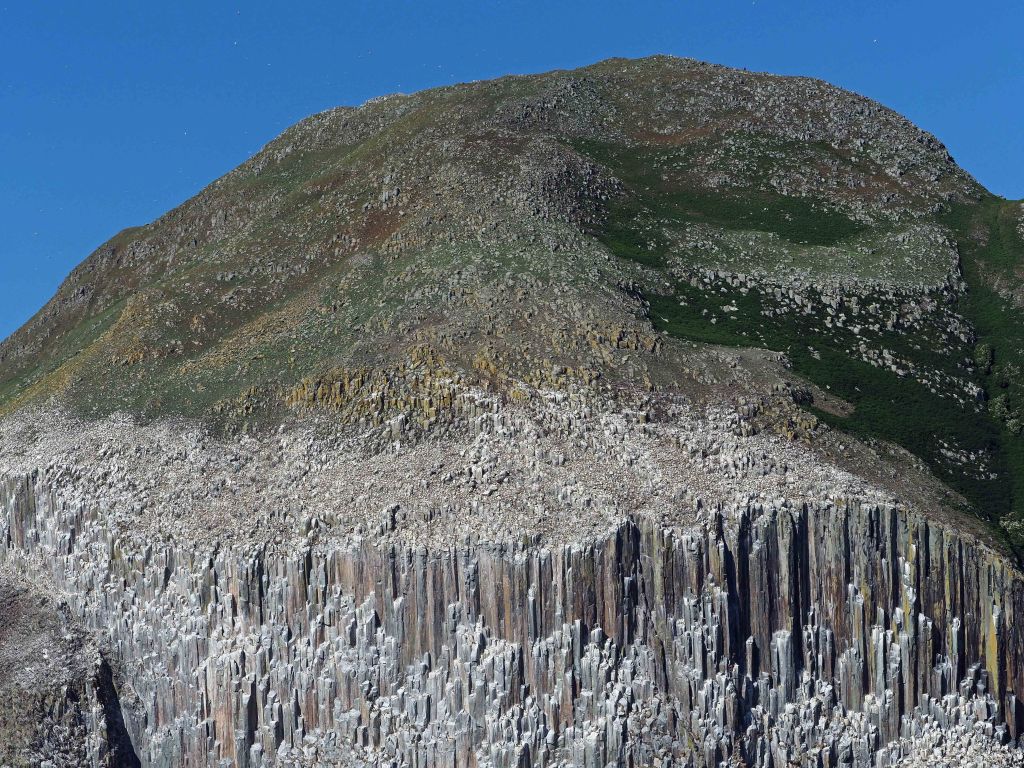
The columnar structures in the microgranites of Ailsa Craig (above) are not to be confused with the basalt columns seen at Fingal’s Cave on the island of Staffa (see below), in the Inner Hebrides of Scotland, which are a cooling-induced joint pattern (Harrison et al., 1987). Cooling of the solidified lava at the Giant’s Causeway in Northern Ireland and at Fingal’s cave resulted in contraction and fracturing, which produced the regular hexagonal fracture.
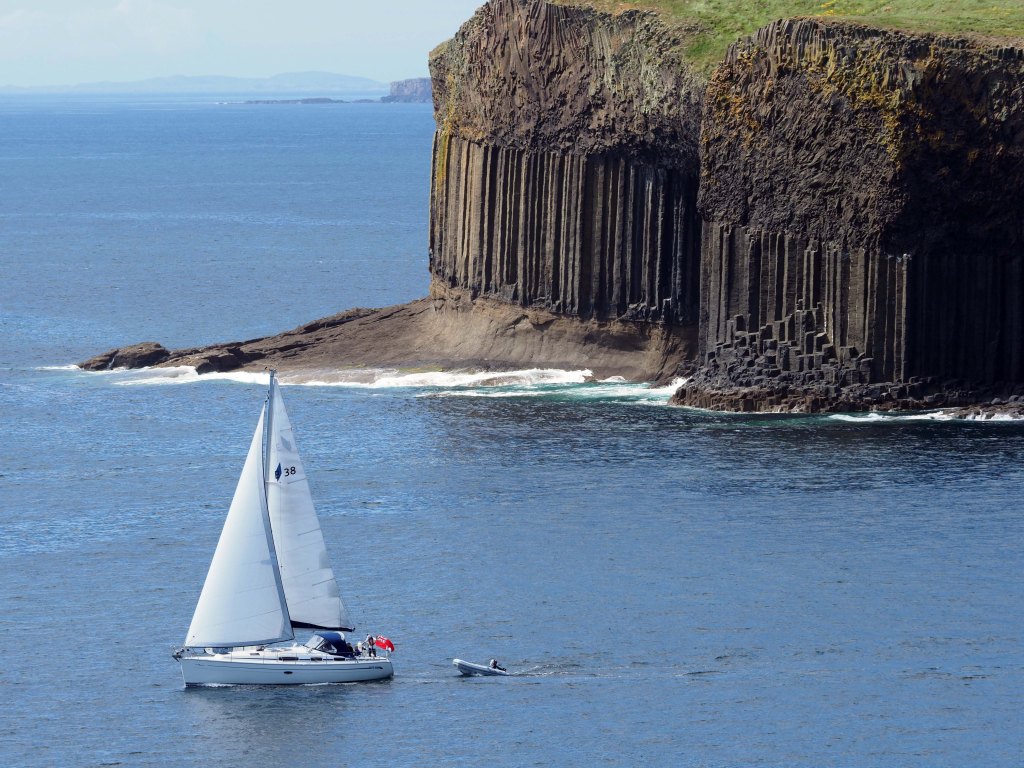
The microgranites on Ailsa Craig are not regular polygonal columns; the pseudo-columns as they are called often only have only two or three faces, and range in diameter from about 0.5 m to 2 m. So, they they form convenient sized blocks for gannets to nest on AND for the manufacture curling stones!
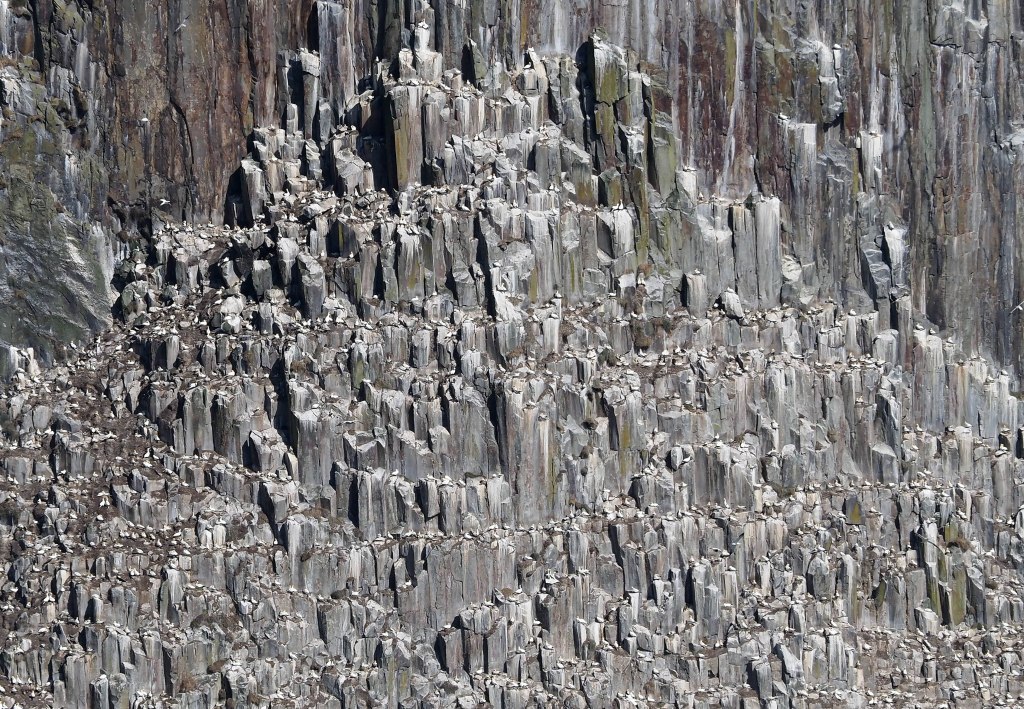
I must admit I was absolutely blown away by the beauty of these rock formations and took photo after photo with a moderately long lens.
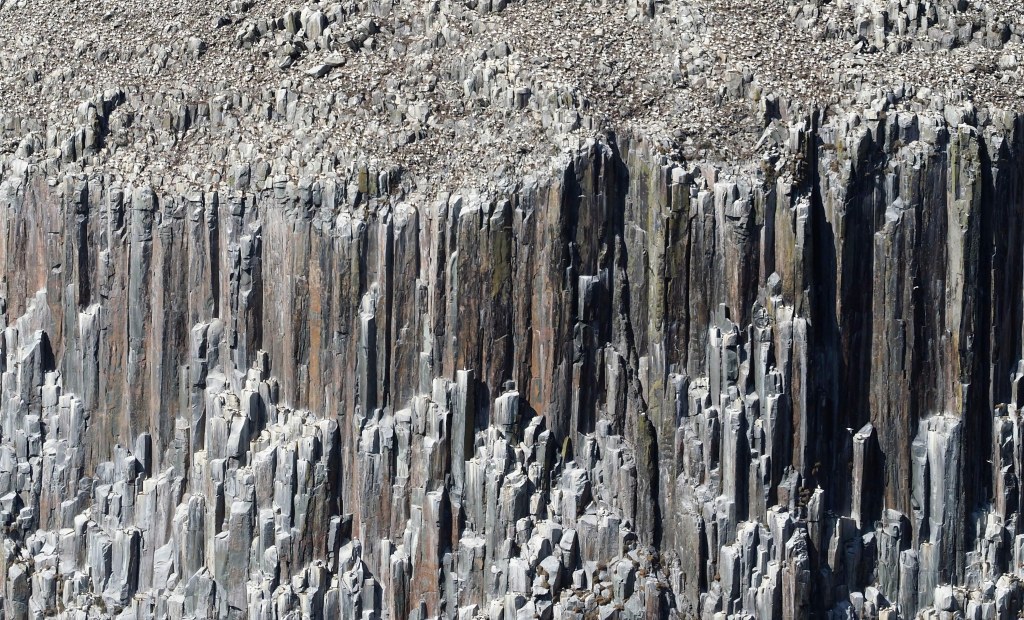
I loved the way the gannets interacted with these columns of granite. Bird and rock interacting to form and shape the island.
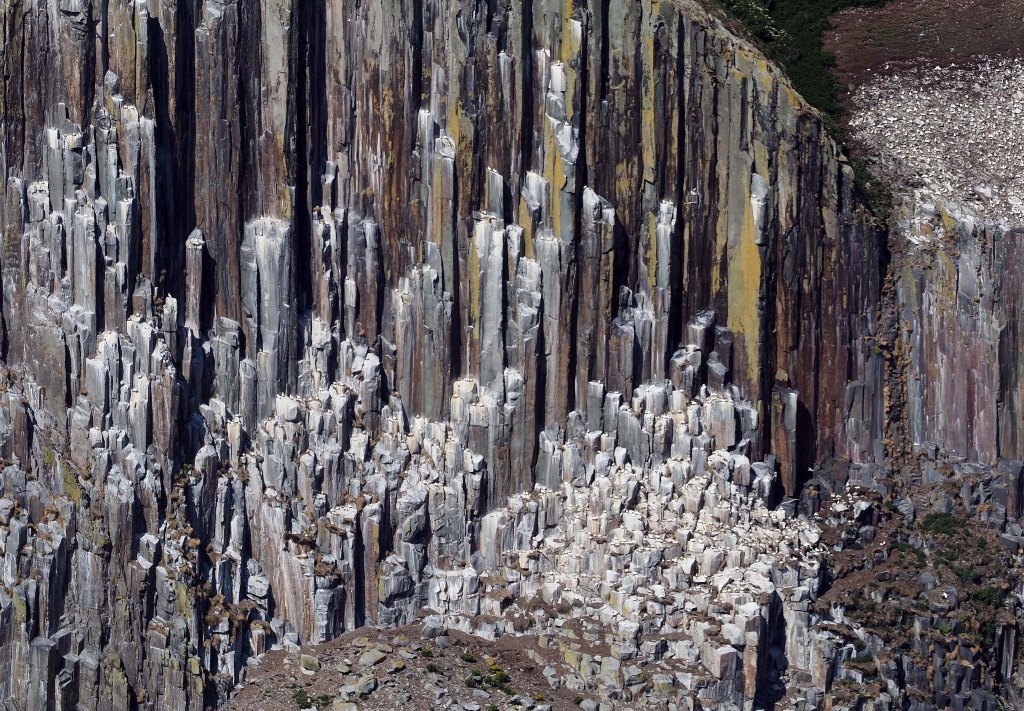
One has to zoom in, or select a small portion of the image to see the gannets (below).
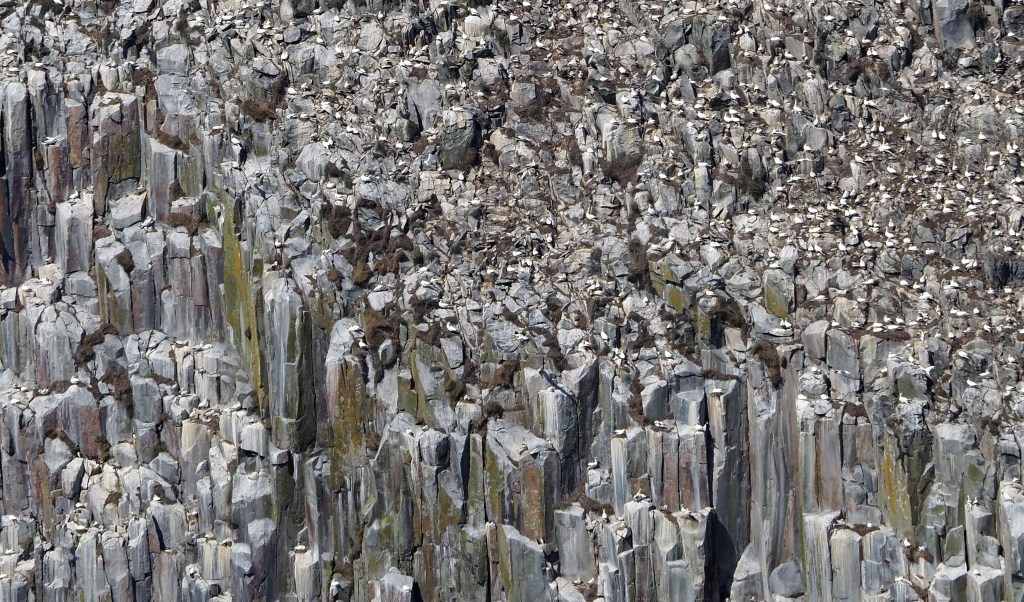
The most densely occupied spaces seemed to be on the flat areas on top of the granite columns (below).
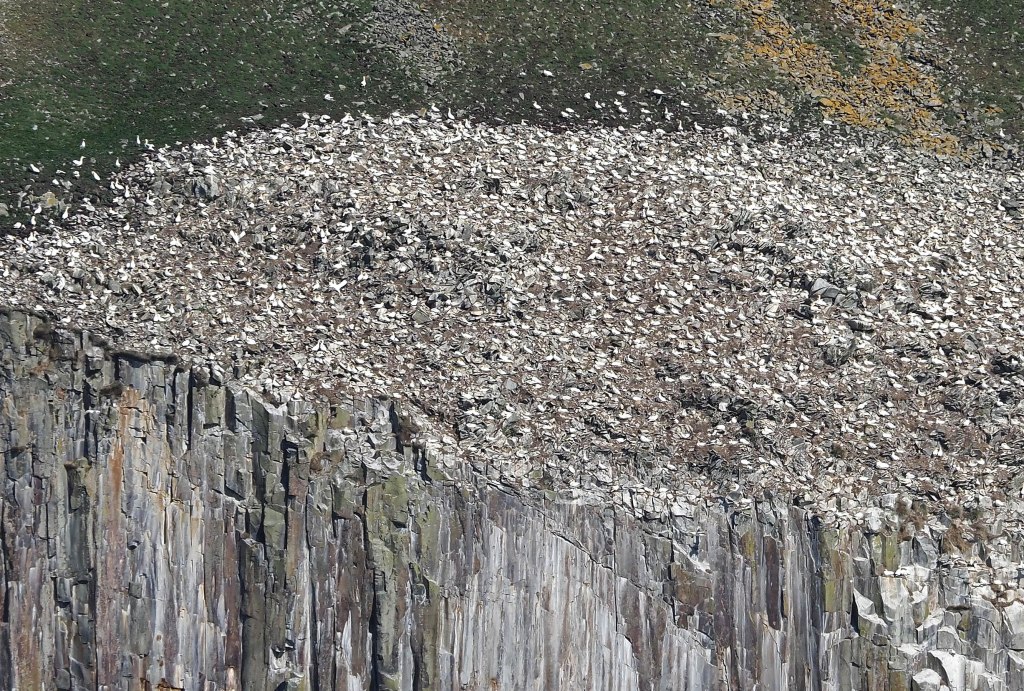
There are also thousands of guillemots on Ailsa Craig (below). As well as Razorbills, Kittiwakes, Fulmar, Shags, Puffins (now that the rats have been eliminated), and Black-backed gulls.
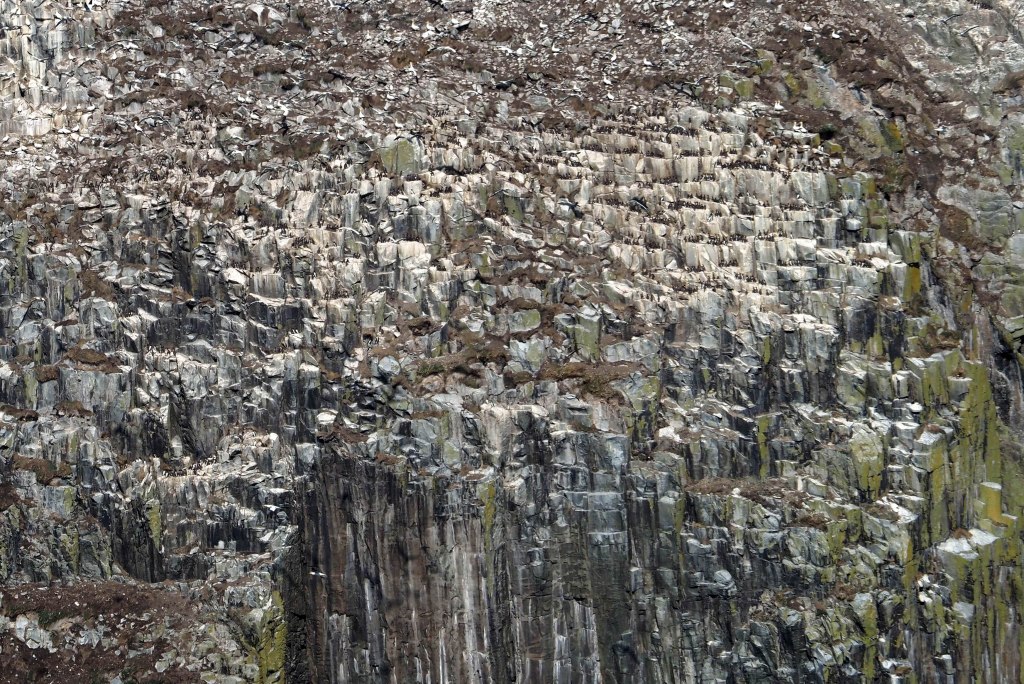
Spot the Guillemots! See below
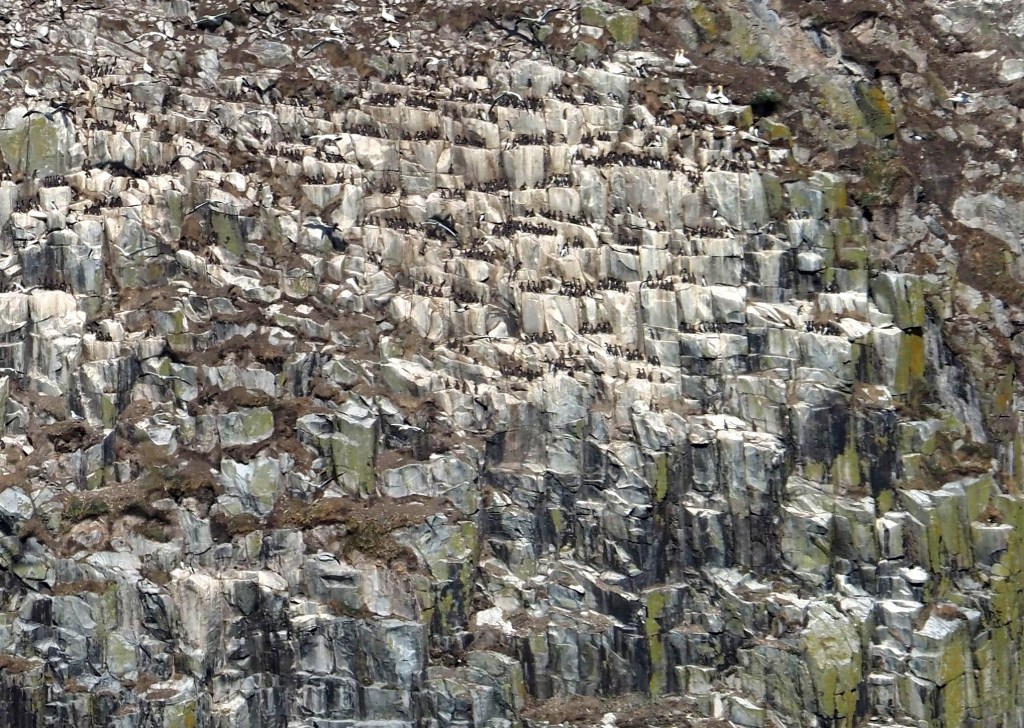
At one point, the Gannets seemed to come tumbling off the cliffs in waves. Thousands flowing down the sides of the island like water. What was driving them off? A Skua?
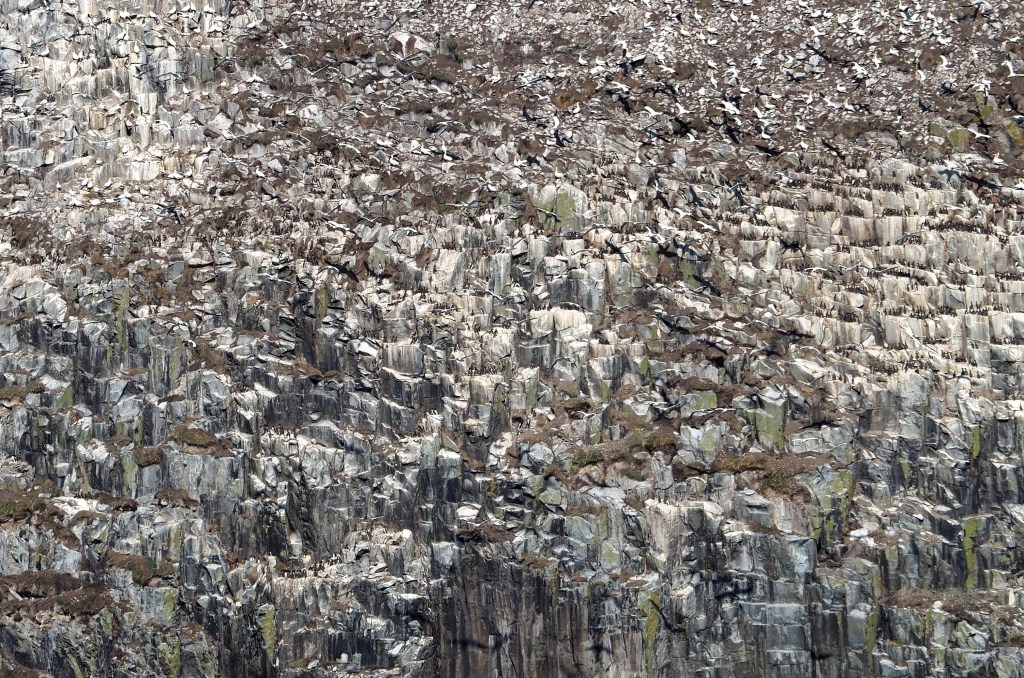
One has to look hard to see the individual gannets (below).
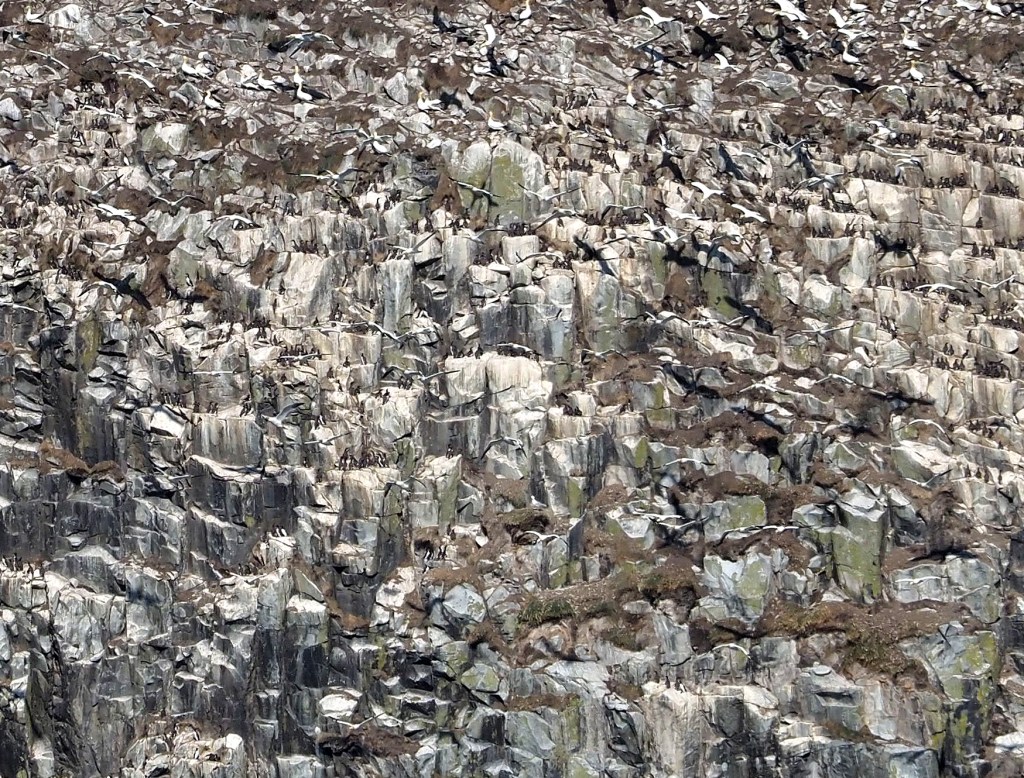
In conclusion, I was very taken with this lump of granite! We were lucky that the sun was shinning and there were huge numbers of gannets flying around. I would love to go back and set foot on the island. It also has a fascinating history, but that is another story.
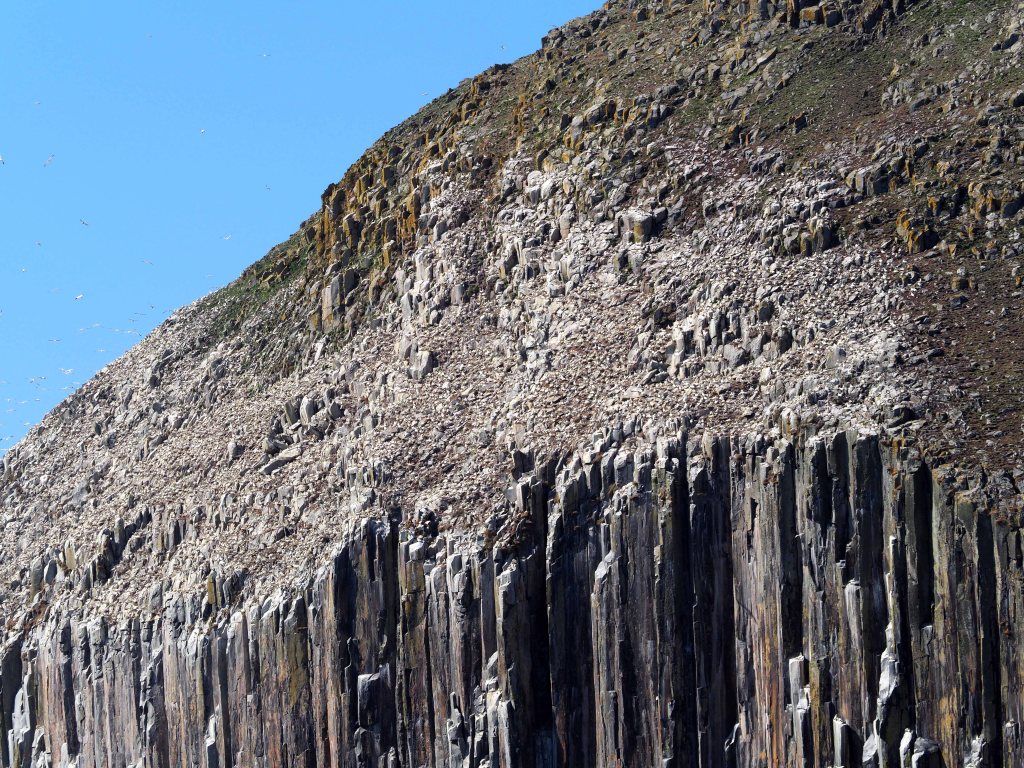
References
Furness, R. W., Hallgrimsson, G. T., Montevecchi, W. A., Fifield, D., Kubetzki, U., Mendel, B., & Garthe, S. (2018). Adult Gannet migrations frequently loop clockwise around Britain and Ireland. Ringing & Migration, 33(1), 45-53.
Harrison, R. K., Stone, P., Cameron, I. B., Elliot, R. W., & Harding, R. R. (1987). Geology, petrology and geochemistry of Ailsa Craig, Ayrshire.
Murray, S., Harris, M. P., & Wanless, S. (2015). The status of the gannet in Scotland in 2013-14. Scottish Birds, 35(1), 3-18.
Zonfrillo, B. (1997). The ecology of seabirds on Ailsa Craig, Firth of Clyde. University of Glasgow (United Kingdom).
http://britgeoheritage.blogspot.com/2014/02/granite-from-ailsa-craig-scotland.html
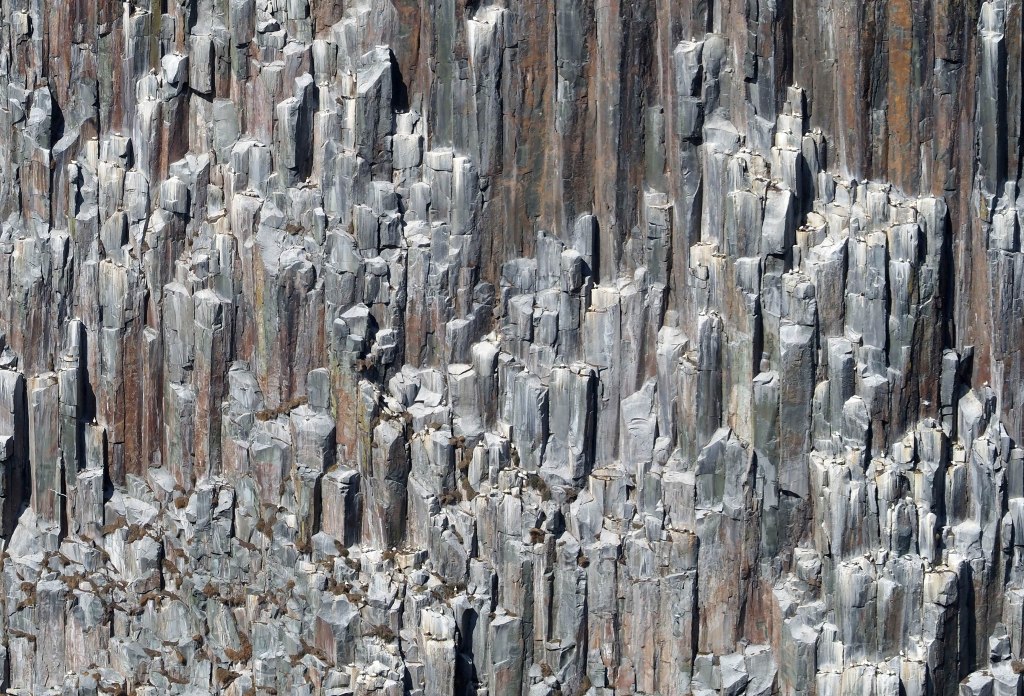
really super Ron. But i wanted you and now i want to get closer but is that possible and who organised the cruise? a tourist thing or a professional outing? either way i wd love to see it. I have Nelson’s fabulous book on gannets and he writes beautifully about Ailsa Crag. An under-known nature writer who was also a scientist.
Just a Fred Olsen cruise on their ship the Borealis, out of Liverpool. Yes, I have that book, forgot to consult it! Ray😊
Hi, that’s us you caught sailing past Staffa on our boat ‘Élodie’ on route to Iona. I have a photo of the cruise ship too. Heading to Alisa Craig this year with a very keen photographer.
How nice! Many thanks for posting.😁
Ray